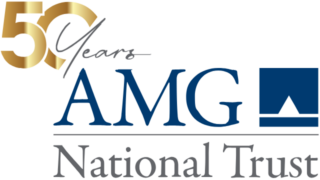It’s Time To Modify Your Expectations
• 2 min read

Get the Latest Research & Insights
Sign up to receive an email summary of new articles posted to AMG Research & Insights.

LI POST: Factors point to lower stock market returns in the future. Here are four ways investors could adjust their expectations.
The stock market’s 30-year performance between 1989 and 2019 was a once-in-a-lifetime event, and it’s unlikely to be repeated in coming decades.
Low interest rates and corporate tax rates drove the market’s dynamic growth, but both have probably seen their low points. As a result, investors should expect a future with more moderate stock returns.
It’s no secret that near-zero interest rates in recent years inflated price-to-earnings (P/E) ratios by making stocks more appealing investments. However, the potential for further P/E expansion is limited in the current environment where interest rates are expected to remain higher for longer.
Similarly, corporate tax rates have been slashed substantially in recent years, making additional cuts improbable, especially given the high federal debt-to-GDP ratios. And many financial analysts worry that lawmakers in coming years might raise corporate tax rates.
Both factors point to lower stock market returns in the future, and investors should adjust their expectations for all asset types. Here are some tips:
Save more, spend less: To achieve their financial goals, many investors may need to save significantly more to achieve their same net worth. Some may also need to spend less to account for inflation’s impact.
Invest globally: With U.S. stock valuations at elevated levels and policymakers facing limited options, global diversification becomes more attractive over the long term. Allocating funds to developed and emerging markets could enhance risk-adjusted returns, while a bias towards U.S. equities might hinder overall portfolio growth.
Think outside the box: As traditional investing becomes more uncertain, alternative assets such as real estate, private equity and private credit could play a more prominent role in boosting returns and diversifying risk.
Avoid taxes: In a low-return environment, taxes become more significant obstacles for portfolio growth. Sophisticated fixed-income strategies that consider after-tax, after-fee returns from various debt instruments is key. A flexible asset-allocation approach that incorporates thoughtful decisions based on valuations, business cycle views, policy changes, and other factors could enhance returns.
HOW AMG CAN HELP
Not a client? Find out more about AMG’s Personal Financial Management (PFM) or to book a free consultation call 303-486-1475 or email us the best day and time to reach you.
This information is for general information use only. It is not tailored to any specific situation, is not intended to be investment, tax, financial, legal, or other advice and should not be relied on as such. AMG’s opinions are subject to change without notice, and this report may not be updated to reflect changes in opinion. Forecasts, estimates, and certain other information contained herein are based on proprietary research and should not be considered investment advice or a recommendation to buy, sell or hold any particular security, strategy, or investment product.
Get the latest in Research & Insights
Sign up to receive a weekly email summary of new articles posted to AMG Research & Insights.



